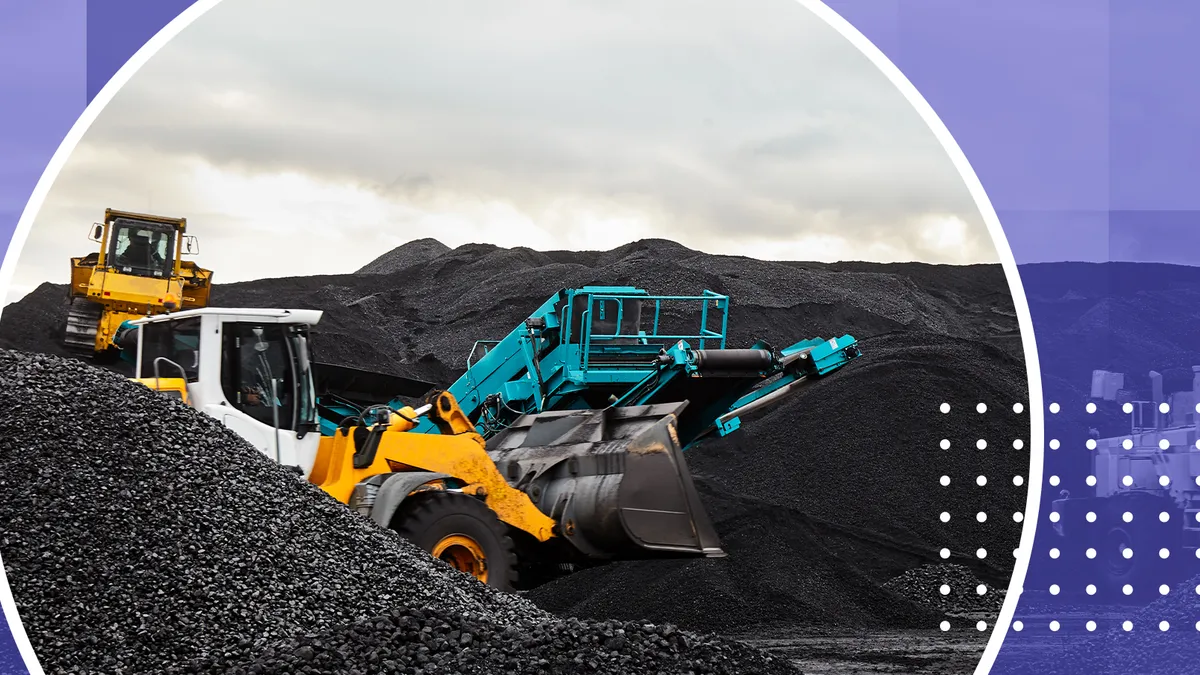Dive Brief:
-
Existing federal programs have up to $38 billion in unspent funds available that could be used to spur job creation in communities impacted by the decline of the coal industry, according to a report released Friday by the White House Interagency Working Group on Coal and Power Plant Communities and Economic Revitalization.
-
President Joe Biden "is taking real steps to address the problems head on and not gloss over and say everything's going to be fine for workers because we're going to create a bunch of jobs," said Carol Zabin, director of the Green Economy Program at UC Berkeley's Center for Labor Research and Education. "He's saying everything can be fine, if we make those jobs union."
-
While likely necessary to maintain public support for cutting carbon emissions, it remains to be seen whether the policies outlined in the report will spur economic recovery in affected communities, according to Zabin and Ed Crooks, vice-chair of Americas for energy research and consulting firm Wood Mackenzie.
Dive Insight:
The Biden administration may be making jobs — and specifically, recovery from the loss of fossil fuel industries to the energy transition — a top priority, but analysts say it remains to be seen whether his strategies will work.
Friday's report identifies 25 regions most impacted by coal industry declines, and establishes these regions as the Interagency Working Group's immediate priority. It also identifies $38 billion that could be made available to these communities in the form of grant funding for infrastructure such as roads, broadband and water systems, for the deployment of clean energy projects, and for environmental remediation. Within three months, according to the report, the working group will begin a series of meetings to learn how the administration can best ensure these opportunities support "good-paying, union job-creating investments in priority Energy Communities."
Providing support for workers affected by the energy transition could prove critical to accelerating climate action, Zabin said. If these communities fear they won't be able to support their families, she said, their fear will turn into resistance that may stall climate policy.
"If we leave people behind, we're not going to get the job done," Zabin said. "We need a big tent."
Crooks said President Biden is likely acting on personal experience, having lived through the backlash brought about by Obama's Clean Power Plan. But while it's clear something needs to be done to keep current energy communities in the boat with the rest of the nation on climate change, Crooks said it's less clear whether the policies outlined by the White House report will make a difference.
"We — meaning the U.S., but also other western capitalist democracies — are not very good at managing the impacts of economic change," Crooks said. "Places that have been hit by the decline of the steel industry in the 70s and 80s remain economically depressed 40 years later."
This isn't for a lack of trying, Crooks said. The problem is the majority of the solutions tried in the past haven't worked, including attempts at retraining displaced workers for careers in new fields.
"The thing that has become a huge cliche is learn to code, and the implication that former miners should become software developers," he said. "That's been tried quite a bit actually, none of which has show any sustained success."
What Crooks said did make him feel optimistic about Friday's report was the pragmatism it expressed in looking at how existing funds can be re-allocated to address needs already identified in rural coal communities — the absence of broadband or good roads, for example. Putting miners to work building things their communities need seems like a "straightforward, sensible thing to do," he said.
Environmental remediation, carbon capture and sequestration, and even pilot projects designed to find other potential low-carbon applications for coal also seem like sensible projects to fund in communities affected by the closure of mines and coal power plants. "That seems realistic, given that you're not asking people to completely change their lives," Crooks said. "You're not saying, train as a software developer and move to the Bay Area."
Long-term, though, it's less clear what will happen when the construction is complete and the jobs run out. Poor infrastructure is one of the reasons rural communities often struggle to develop new businesses and more diversified economies, Crooks said. But it's also possible, he said, that improving a community's roads will serve only to make it easier to leave.
Crooks and Zabin also agreed that the $38 billion figure would likely come up short, even if the funds are directed specifically to coal communities. There are currently just over 50,000 coal miners in the U.S., which means less than a million in funding per miner. But miners aren't the only workers affected by coal plant and mine closures — the White House report also aims to target employees in related industries such as logistics and services, as well as schools and government services funded by coal-related tax revenue.
But the $38 billion is, according to Friday's report, the amount that is available now, suggesting additional funding could be forthcoming, Zabin said. If that's the case, then funds identified by the report make a good-sized downpayment.
"No, $38 billion is not enough, but if it's focused on those few communities and it's integrated with other big public investments, then you have a chance," Zabin said.














